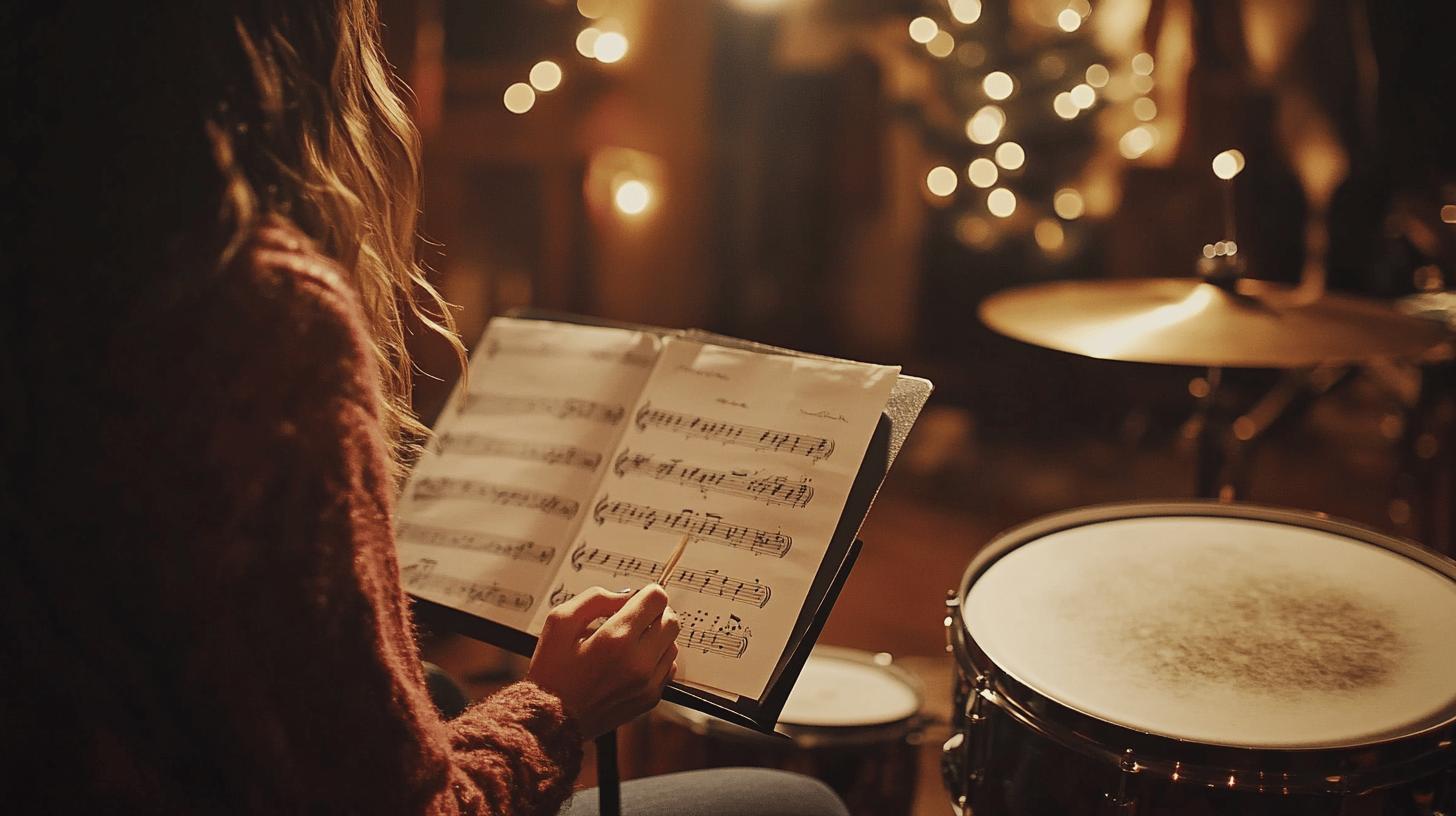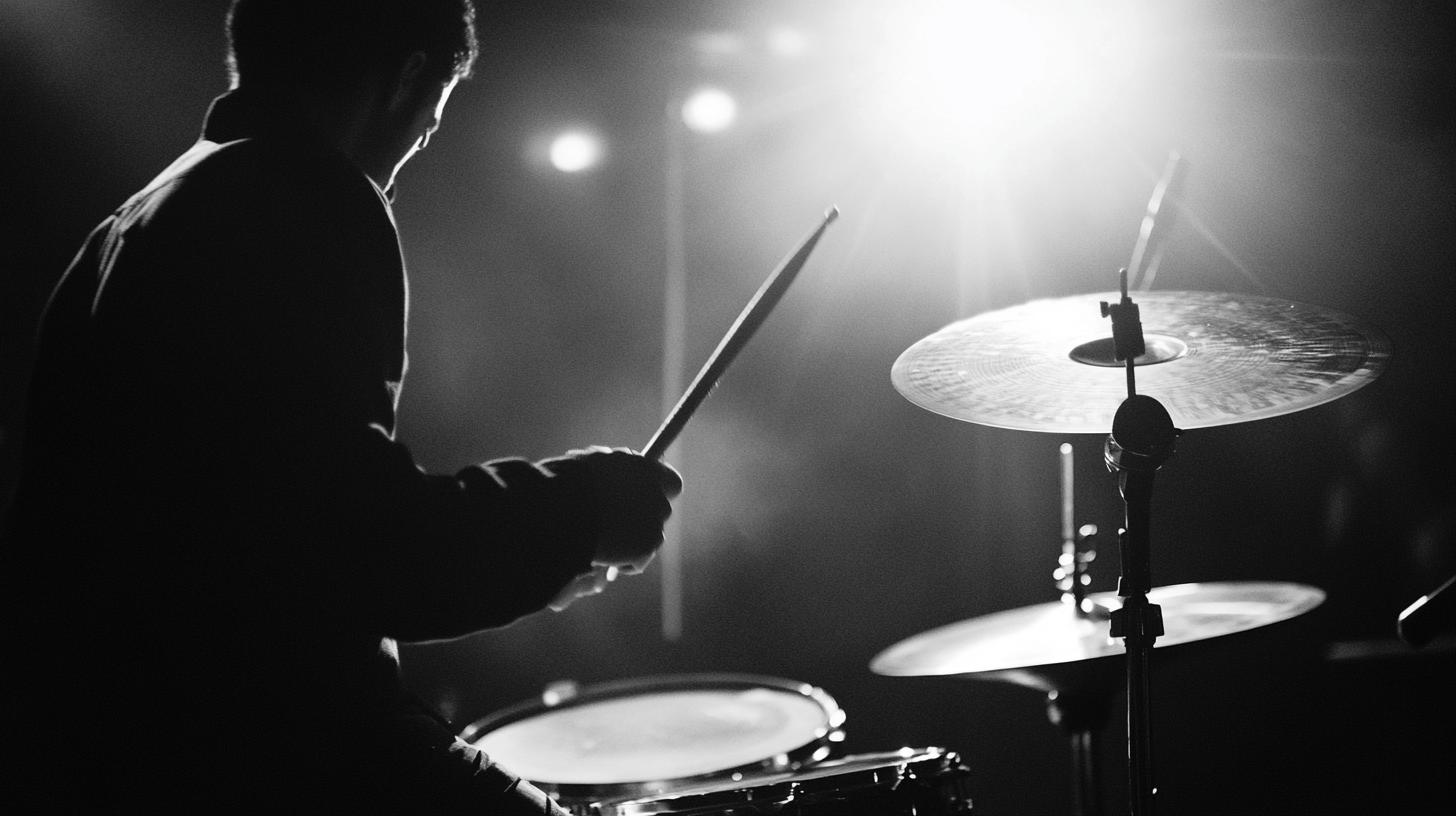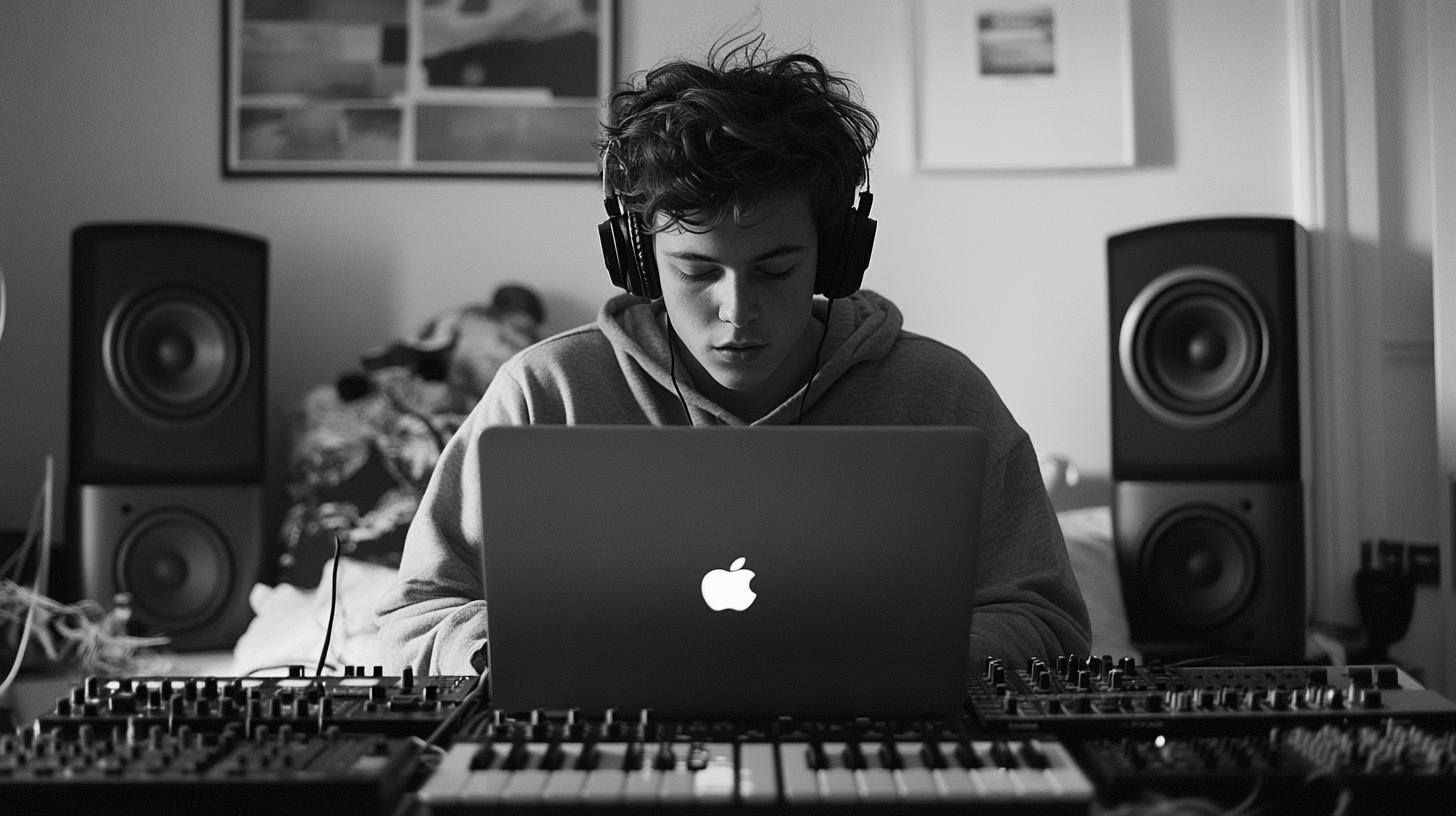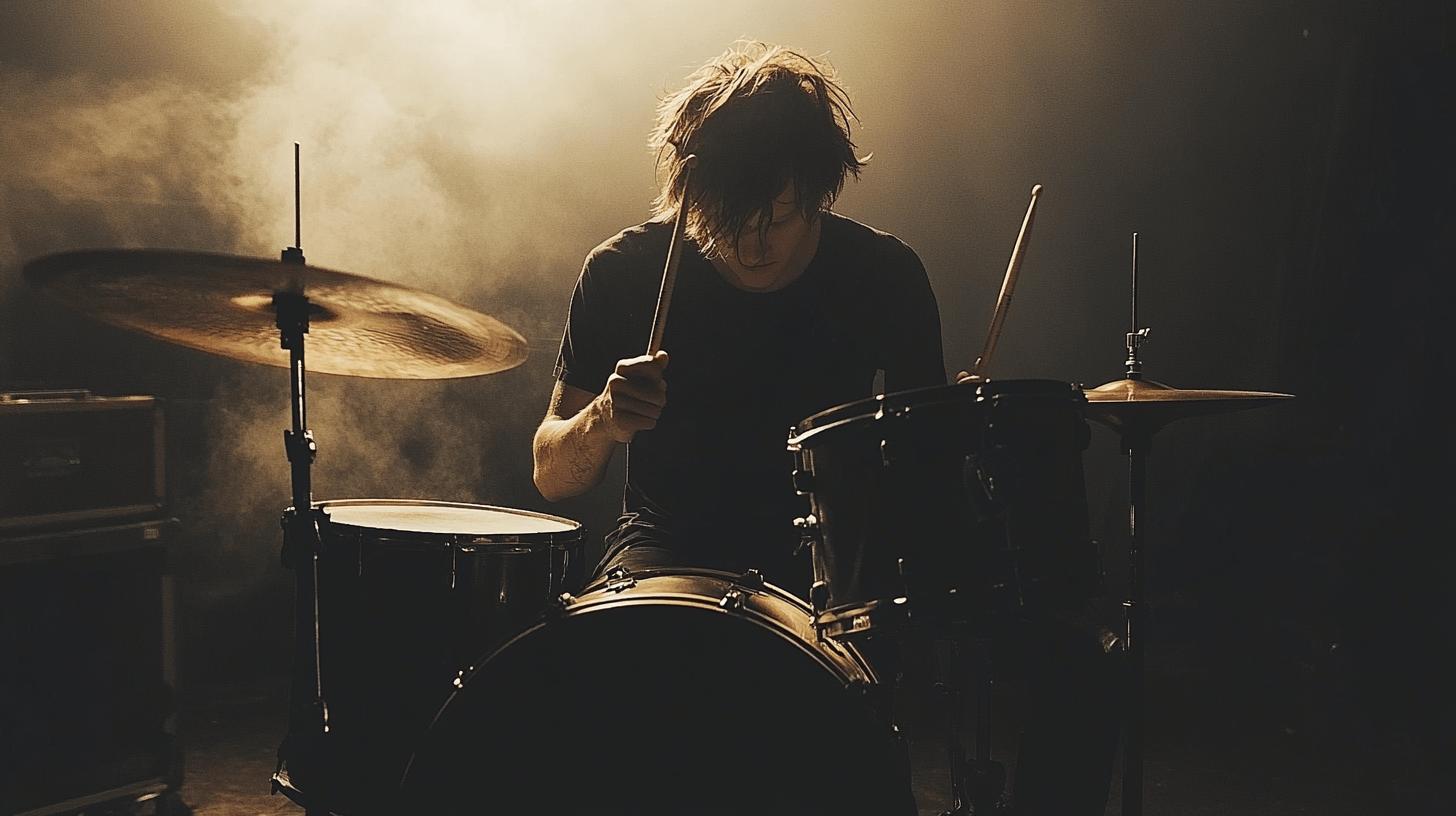The beat is the heartbeat of music—the invisible force that makes you tap your foot, nod your head, or get lost in the rhythm. It’s the driving pulse that transforms mere sounds into something alive, something that moves both the music and the listener.
From the electrifying thump of a dance track to the delicate cadence of a classical symphony, beats shape the energy, tempo, and groove of every song. They provide the foundation upon which melodies soar and harmonies intertwine, giving music its structure and flow.
Imagine a song without a beat—just a scattered collection of sounds with no pulse, no momentum, no life. That’s how crucial beats are! But not all beats are created equal. Different genres, styles, and cultures have developed unique rhythmic patterns that define their sound.
In this guide, we’ll break down the different types of beats, explore how they influence music, and help you recognize the pulse behind your favorite tunes. Let’s dive in!
Understanding Different Types of Beats in Music

In music, a beat is the fundamental unit of time, serving as a regular and repeating pulse that establishes the speed of a composition.
This pulse divides time into equal segments, providing a framework around which melodies and harmonies can be structured. By setting a consistent tempo, beats enable musicians to synchronize their play, ensuring coherence in performance.
| Type of Beat | Description | Example |
|---|---|---|
| Downbeat | The first and strongest beat of a measure, setting the rhythm’s foundation. | The “1” in a waltz’s “1-2-3” count. |
| Upbeat | The lighter beat before the downbeat, leading into the next measure. | The “2” and “3” in a waltz’s “1-2-3” count. |
| On-beat | Beats that align with the main pulse, often the first and third in 4/4 time. | A steady clap on the beat in a basic rhythm. |
| Off-beat | Beats that fall between the main beats, often creating a syncopated rhythm. | Clapping on beats 2 and 4 in pop or rock music. |
| Backbeat | A specific off-beat accent on beats 2 and 4 in 4/4 time, driving the rhythm. | Snare drum hits in rock music. |
| Syncopated Beat | Emphasis on weak beats or unexpected parts of the beat, adding complexity. | The unexpected rhythms in jazz or Latin music. |
| Cross-beat | Rhythms that conflict with the standard meter, creating layered textures. | Polyrhythms in African drumming. |
| Hyperbeat | Larger structural beats where each beat represents an entire measure. | Extended phrases in classical symphonies or long-form compositions. |
Understanding the concept of beats and their variations is crucial for music enthusiasts, as it deepens the appreciation and enjoyment of musical pieces.
- Establishing tempo
- Creating rhythm
- Defining musical genre
- Enhancing emotional impact
- Supporting danceability
- Influencing listener’s experience
Different musical genres utilize beats to craft distinct auditory experiences. For example, in rock music, a strong backbeat on the second and fourth beats of a measure energizes the melody, inviting audience participation.
In contrast, genres like jazz employ intricate swing rhythms to create a sense of fluidity and improvisation. Electronic dance music (EDM) often relies on repetitive beats to build anticipation and maintain a high-energy atmosphere.
Through these varied applications, beats not only define the character of a genre but also influence the listener’s emotional and physical response, transforming the music into a dynamic experience.
Exploring Music Beat Types Across Genres

Music beats serve as the backbone of any composition, shaping its rhythm and enhancing the listener’s experience. Each genre features unique beat patterns that add distinct vibes, energy, and danceability.
Understanding these differences is essential for appreciating the nuances that characterize various musical styles. By examining the foundational beats of rock, hip-hop, and electronic music, one can gain insight into the diversity of music beat types.
The rock backbeat is one of the most recognizable and influential beat patterns in music history. Typically, it features a strong emphasis on the snare drum hitting on the second and fourth beats of a measure.
This pattern creates a driving rhythm that propels the music forward, often encouraging audience participation through clapping or dancing. The backbeat’s simplicity and power make it a staple in rock music, providing the energy and momentum that define the genre.
Boom bap emerged as a defining rhythm in early 1980s hip-hop. This beat pattern features a distinctive combination of a bass or kick drum (“boom”) and a snare drum (“bap”), creating a syncopated, head-nodding groove.
Boom bap’s influence extends beyond hip-hop, as its rhythm has been sampled and incorporated into various genres. The raw, organic feel of this beat pattern helps convey the authenticity and storytelling central to hip-hop music.
Deep house, a sub-genre of electronic dance music, employs a “four on the floor” kick pattern with an off-beat hi-hat, creating a smooth, flowing rhythm. Unlike the standard backbeat, deep house incorporates syncopation, adding complexity and depth to the music.
This beat type is known for its ability to maintain a continuous groove, making it ideal for dance floors where a steady, hypnotic rhythm is desired.
| Genre | Beat Type | Distinctive Feature |
| Rock | Backbeat | Snare hits on beats 2 and 4 |
| Hip-Hop | Boom Bap | Bass (“boom”) and snare (“bap”) combination |
| Deep House | Four on the Floor | Syncopated off-beat hi-hat |
Cool and Different Beats in Modern Music

Deep house and drum and bass exemplify some of the most progressive beats in modern music. Deep house is characterized by its “four on the floor” kick pattern combined with an off-beat hi-hat, creating a groove that is both steady and syncopated.
This beat pattern moves beyond the traditional backbeat, offering a layered rhythm that is both engaging and hypnotic. Its smooth, flowing rhythm allows for a seamless dance experience, making it a staple in club settings where continuous movement is key. Check out the beat below—it perfectly captures the vibe of a deep house groove!
Drum and bass, in contrast, are notable for their extremely high BPM, often exceeding 170. This rapid pace transforms the standard rock backbeat into an exhilarating rush, providing a high-energy backdrop for intense, fast-paced dance routines.
In modern compositions, these beats shape the music’s impact on listeners and dance culture. Deep house beats are frequently used in tracks designed to sustain energy on the dance floor, maintaining a consistent pulse that encourages prolonged dancing.
The off-beat hi-hat adds an element of unpredictability, enhancing the immersive experience for the listener. Drum and bass, with their accelerated tempos, push the boundaries of rhythmic complexity, challenging dancers to keep pace with their frenetic speed.
These beats not only define their respective genres but also influence the broader musical landscape, inspiring artists to explore new rhythmic territories and transform their music into a dynamic expression of energy and emotion.
Notable Rap Beat Examples and Techniques

Rap music is built on the foundation of unique beats and innovative rhythmic techniques. Trap beats and the “funky drummer” rhythm are two well-known examples that have influenced and defined the genre for many years. Rap music’s artistry is further enhanced by a variety of rap flow styles in addition to these beats.
Trap music, originating in Atlanta, has become a defining sound in modern rap. What makes trap beats unique? Trap music is characterized by its half-time feel, akin to Dubstep, creating a laid-back yet intense groove.
The hallmark of trap beats is the distinctive hi-hat rhythm, often featuring rapid 32nd notes that add a layer of complexity and urgency. These hi-hats are typically combined with deep bass lines and crisp snares, forming a soundscape that amplifies the emotional intensity of the lyrics.
Distinguishing traits are:
- Half-time feel: A laid-back yet intense groove similar to dubstep.
- Hi-hat rhythms: Rapid 32nd-note patterns that add urgency and complexity.
- Deep bass and crisp snares: A combination that amplifies the emotional intensity of the music.
The “funky drummer” beat holds a legendary status in the world of rap. Why is the funky drummer beat so significant? Popularized in the 1980s by New York City producers, this beat became foundational to hip-hop through its use in sampled breaks.
Originating from a 1970 James Brown track, the funky drummer beat features a syncopated rhythm that has been sampled in countless rap songs. Its enduring popularity is a testament to its versatility and groove, serving as a rhythmic backbone for many hip-hop classics and influencing the genre’s evolution.
Rap Flow Styles
Rap flows are as crucial to the genre as the beats themselves. What are some notable rap flow techniques? Notable flow techniques include the “straight” or “on-beat” flow, where lyrics align with the beat’s rhythm, providing clarity and emphasis.
Conversely, the “syncopated” flow involves off-beat rhyming, creating a more complex and engaging listening experience. The “double-time” flow, featuring rapid-fire delivery, showcases an artist’s lyrical dexterity and is often employed to convey excitement or urgency.
These varying styles contribute to rap’s rich tapestry, allowing artists to express individuality and creativity. How have these beats influenced modern rap production? The incorporation of trap and funky drummer beats has led to a diverse sonic landscape in rap music.
Producers now blend elements from different eras, crafting beats that pay homage to hip-hop’s roots while pushing boundaries. This fusion creates tracks that resonate with both nostalgic and contemporary audiences, ensuring rap’s continued relevance and evolution.
The interplay between traditional and modern beats encourages innovation, driving the genre forward and transforming the music experience.
Drum Beat Types and Patterns

Drum beats have evolved significantly over time, shaping the foundation of music across genres. What is the evolution of drum beats from traditional to modern patterns? Initially, traditional drum patterns focused on basic rhythms that provided a simple, steady pulse.
Over time, technological advancements and cultural influences led to the development of more complex and varied drum beats. The introduction of electronic drum machines and digital sampling further expanded the possibilities, allowing for intricate patterns and unique sounds.
Modern drum beats now often incorporate elements from multiple genres, creating hybrid rhythms that enhance musical compositions.
Key Drum Beat Styles
- Rock Backbeat: Snare on beats 2 and 4; drives rock music.
- Funk Groove: Syncopated rhythms with intricate hi-hats; emphasizes groove.
- Jazz Swing: Triplet-based ride cymbal; creates a smooth, flowing feel.
- Reggae One Drop: Bass drum on the 3rd beat; delivers a relaxed, syncopated rhythm.
- Metal Blast Beat: Rapid-fire bass and snare hits; adds intensity in metal.
Complex drum fills demonstrate inventiveness, create tension, and link song sections. These changes add energy and force to songs while also keeping listeners interested. The foundation of rhythm is made up of drum beats and fills, which also help music evolve and become more emotionally complex.
Advanced drum fills can elevate a musical piece by adding depth and intricacy. What role do advanced drum fills play in music? These fills serve as transitional elements, bridging different sections of a song and building tension or excitement.
They often involve rapid changes in rhythm or dynamics, showcasing a drummer’s technical skill and creativity. By incorporating advanced fills, musicians can create unexpected twists and maintain listener engagement, making the overall composition more dynamic and compelling.
Types of Beats in Electronic Dance Music

Electronic dance music (EDM) is characterized by its pulsating beats and rhythmic complexity, which create energy and anticipation on the dance floor.
What makes EDM beats unique? EDM beats are designed to maintain a continuous and engaging rhythm, often using repetitive loops that build tension and lead to explosive drops.
Through the use of synthesizers, drum machines, and digital effects, EDM producers craft beats that are both dynamic and immersive, encouraging listeners to lose themselves in the music.
This genre’s versatility allows for a wide range of beat patterns that cater to different moods and settings, enhancing the overall music experience. Dubstep, a prominent sub-genre of EDM, is known for its distinctive beat structure.
What is unique about dubstep beats? Dubstep relies on long build-ups followed by intense bass drops, often featuring a half-time feel with a BPM of 140 that feels like 70. This creates a stretched pulse that enhances the music’s impact, providing a sensation of both speed and weight.
The interplay between syncopated rhythms and heavy bass lines gives dubstep its signature sound, making it a favorite among fans who appreciate its atmospheric and energetic qualities.
Techno, another influential EDM genre, offers a different approach to beat creation. How do techno beats stand out? Techno beats are characterized by their driving, repetitive rhythms, typically maintaining a consistent four-on-the-floor kick drum pattern.
This relentless tempo, often ranging between 120 to 150 BPM, creates a hypnotic effect that draws listeners into a trance-like state.
The minimalistic yet powerful nature of techno beats focuses on rhythm and texture, allowing for subtle variations and progressions that keep the audience engaged.
By emphasizing precision and clarity, techno beats provide a backdrop for intricate soundscapes and innovative musical exploration.
| Beat Type | Characteristics | BPM Range |
|---|---|---|
| Dubstep | Half-time feel, heavy bass drops | 140 (feels like 70) |
| Techno | Repetitive four-on-the-floor pattern | 120-150 |
Final Words
Exploring various types of beats reveals their vital role in defining musical tempo, rhythm, and genre. From the rock backbeat to EDM patterns, each offers a distinctive energy and experience to listeners.
Understanding these beat structures enhances music appreciation and highlights the creative diversity within different genres.
Embracing this knowledge allows deeper connection with the music, offering enjoyment and insight into the artistry behind each composition. Celebrate the rhythm and enrich your musical journey with diverse beat explorations.
FAQ
How many types of beats are there?
There are various types of beats in music, often categorized based on rhythm and structure. Common types include simple, compound, duple, triple, quadruple, and complex beats, which describe how rhythms are structured and felt in music.
What are the six types of beats in music?
The six types of beats in music can be described as:
- Accented: Strongly emphasized beats.
- Unaccented: Beats with less emphasis.
- Regular: Consistent, evenly spaced beats.
- Irregular: Beats with varying intervals.
- Strong: Beats that drive the rhythm and are often emphasized.
- Weak: Beats that provide support but are less emphasized.
What are the 4 beats?
The “4 beats” refers to the 4/4 time signature, the most common rhythm in Western music. Each measure contains four beats, and the quarter note gets one beat. This structure is prevalent in genres like pop, rock, and classical music.
Types of beats in music with examples?
- Rock Backbeat: Emphasizes beats 2 and 4; found in rock music.
- Boom Bap: A strong kick and snare pattern typical in hip hop.
- Shuffle Beat: A swing-like rhythm common in blues and jazz.
- Funk Groove: Syncopated and danceable rhythms in funk.
- Waltz Beat: A 3/4 time signature used in waltzes.
Types of beats in drums?
- Rock Backbeat: Common in rock music with strong snare hits on 2 and 4.
- Jazz Swing: A swinging, triplet-based rhythm.
- Reggae One Drop: Features emphasis on the third beat.
- Funk Groove: Tight and syncopated beats.
- Metal Blast Beat: Extremely fast and aggressive drumming.
Different types of beats in rap?
- Trap Beat: Features rapid hi-hats and heavy 808s.
- Boom Bap Beat: Classic hip-hop beat with a strong kick and snare.
- Drill Beat: Dark, minimalistic rhythms with heavy bass.
Examples of beats in music?
- Rock Backbeat: Found in songs like “We Will Rock You” by Queen.
- Jazz Swing: Heard in jazz standards like “Take the A Train” by Duke Ellington.
- Funk Groove: Exemplified by “Superstition” by Stevie Wonder.

